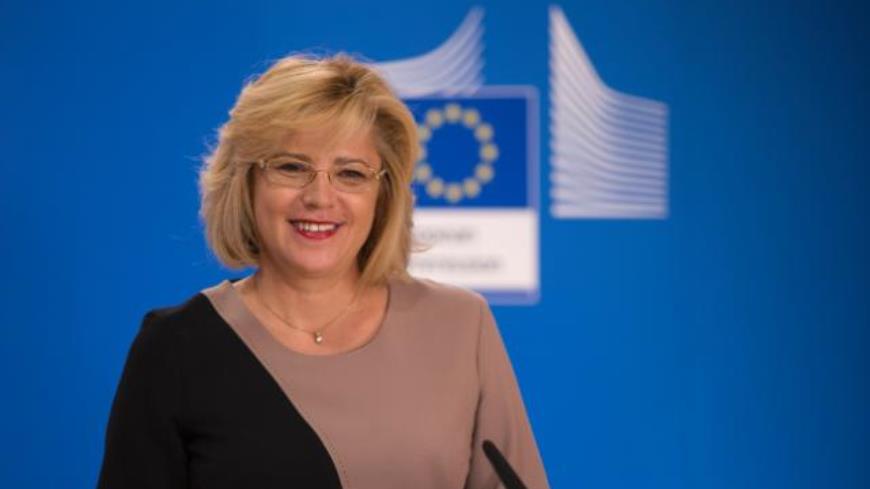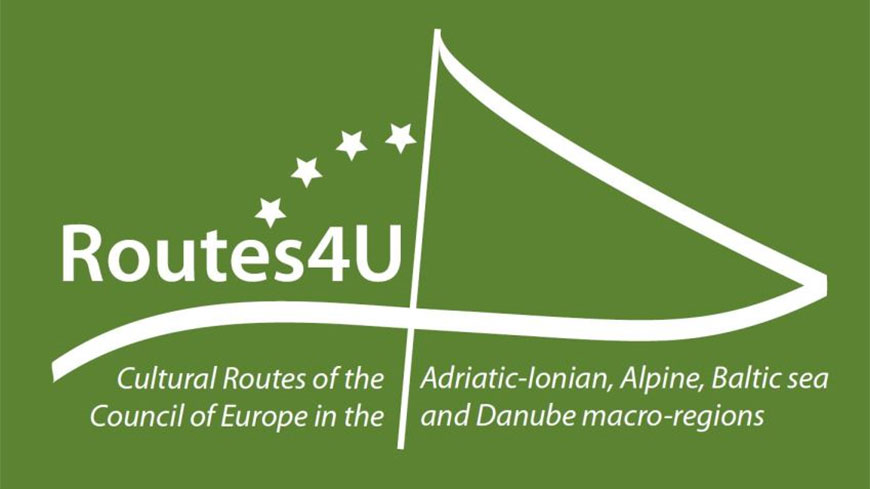We invite Ms Corina Crețu, European Commissioner for Regional Policy (DG REGIO), to tell us more about the origins of the EU Macro-Regional Strategies, her views on the Cultural Routes of the Council of Europe programme and the role of civil societies in the EU Macro-regional Strategies.
Ms Corina Crețu is European Commissioner for Regional Policy since 2014. The European Commission is currently co-funding the project "Routes4U" through the Directorate General for Regional and Urban Policy (DG-REGIO). DG REGIO supports job creation, improved quality of life and sustainable development at local and regional level.
Commissioner Crețu, we are delighted you have accepted to answer our questions. Could you tell us more about the origins of the EU Macro-Regional Strategies?
Macro-regional strategies are an important innovation in territorial cooperation and cohesion, which was gradually introduced since 2009. The idea behind is that there are certain key common priorities and challenges in given geographical areas which, while not covering the whole of the EU, are beyond the reach of regional and national governance.
"Macro-Regional Strategies" are therefore launched to address common challenges and exploit common opportunities faced by several Member States (or their regions) as well as non-EU countries located in the same geographical area, which thereby can benefit from strengthened cooperation contributing to the achievement of economic, social and territorial cohesion.
The strategies rely on a coordinated approach and synergy effects: optimal use of existing financial sources, better implementation of existing legislation, and better use of existing institutions.
Four EU macro-regional strategies have been launched so far, covering 19 EU member-states and 8 non EU countries: Baltic Sea Region (2009), Danube Region (2010), Adriatic and Ionian Region (2014), and Alpine Region (2015). All strategies are accompanied by a rolling Action Plan, so they are dynamic instruments.
The strategies differ in several respects from cross-border and transnational territorial cooperation: their key feature is the anchoring to integrated, strategic, longer-term-oriented and open-ended frameworks. In addition, they are requested by the Member States and reflect the strong political commitment towards joint achievement of common objectives. The objectives vary according to the needs of the macro-region concerned and the prominence is to be given to strategic issues bringing an added value to horizontal EU policies.
The development of macro regional strategies since 2009 provides evidence of the countries' interest for transnational cooperation, and for the relevance of such territorial scale to address joint challenges and opportunities (e.g. innovation, climate change, transport, energy, environment) together in a more efficient way.
Of 27 countries participating in the four EU macro-regions, eight are non-EU countries. Could you tell us more about this cooperation?
This is precisely one of the most interesting advantages of the macro-regional strategic approach. I will use the Danube Strategy to illustrate this: using the potential of the Danube for transport, energy, tourism without compromising its future requires 14 countries to plan, decide, design and act together. The Danube Strategy provides the political framework to allow for the necessary coordination on an equal footing among these 14 countries. Even though the available funding sources differ between EU and non-EU countries, and there are obviously much less EU funds available for cohesion in non-EU countries compared to EU countries, still the approach to cooperation and coordination of spending is the same. This also allows non-EU countries to make concrete steps towards integrating their economies and administrations with those of the EU countries. For both IPA and ENI countries, therefore, macro regional strategies are a unique platform. The recent Communication from the European Commission on a "credible enlargement perspective or and enhanced EU engagement with the Western Balkans", issued on 6th February, refers to further developed collaboration with the EU countries, including the Macro Regional Cooperation.
Such cooperation activities are also very important in order to let the administration of the non-EU countries acquire new skills, and the exchanges are beneficial also to the EU-countries, as they allow all actors to "think macro regional" and "think European". It is remarkable that the "Former Yugoslav Republic of Macedonia" is now interested to join the Adriatic-Ionian Strategy.
The Cultural Routes of the Council of Europe bring together several countries through their grass-roots networks. For example, Romania is crossed by seven Cultural Routes, connecting more than 20 countries. They promote a European shared heritage, dialogue and mutual understanding. How do you think those networks certified by the Council of Europe contribute to the EU Priorities 2014-2020?
Cultural Routes are by definition projects that "unite" several locations - even over a long distance - around a common heritage. They help generating a feeling of common identity across national and regional borders, something much needed in order to advance on the path of European integration and to ensure prosperity and stability beyond the borders of the EU.
Referring to the priorities of the EU Commission, several come to relevance in relation to Cultural Routes. By generating and attracting tourism, Cultural Routes contribute directly to investments, growth and jobs. They facilitate the uptake of digital services. And, if managed effectively, they can give a contribution to sharing a culture of sustainability and carbon-emissions reduction, promoting participation and democratic change and dealing with new social challenges such as migratory flows. The advantage of Cultural Routes is that the combine physical infrastructures with "intangible values" (history, culture).
The Council of Europe Framework Convention on the Value of Cultural Heritage for Society (Faro Convention, 2005) promotes a wider understanding of heritage and its relationship to communities and society. Could you tell us more about the role of the civil society in the implementation of the EU Macro-Regional Strategies?
The central role of actors other than representatives of ministries (regional, urban, municipal administrations, social partners, organised civil society and academia) in the implementation of regional development is recognised throughout all macro regional strategies. The approach how these actors can be involved in the different macro regional strategies varies but all strategies recognise their growing importance. For example, the Council of Danube Cities and Regions validly contributes to spreading the values and priorities of the Strategy. Several initiatives gathering civil society and more particularly citizens have arisen and met in the context of the Annual Forum organised by the Danube Strategy in Budapest in 2017. This said, it should be underlined that civil society involvement is an element of good practice at all levels of Governance (European, national, regional, local) and therefore is not just relevant for the implementation of macro regional strategies. Still, in the case of Cultural Routes, the involvement of civil society is not only beneficial, but is a necessary condition for the success of the projects.
Could you share with us some of the EU priorities after 2020 regarding regional policies and if heritage enhancement will play a role in it?
The planning of the next financial period is currently ongoing. New Multi Annual Financial Framework and proposals for future cohesion policy will be issued in May. Which topics will feature as priority cannot yet be said. We will however do our best to continue investing in the areas which have shown to be of success.
More information
- Routes4U Project: www.coe.int/routes4u
- European Commission - DG REGIO: ec.europa.eu/regional_policy
- EU macro-regions
- Adriatic-Ionian: www.adriatic-ionian.eu
- Alpine: www.alpine-region.eu
- Baltic sea: www.balticsea-region.eu
- Danube: www.danube-region.eu


